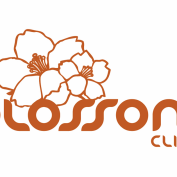Contributed by Rylen Feeney, practitioner at Blossom Clinic. Reprinted with the permission of The Wellspring School Blog.
As the nuclear reactors in Japan are cooling, it is important that we remain calm but vigilant about our food, air and water. Radiation travels in unpredictable ways. Cesium 137 frequently makes its way into the food chain. More than 15 years after Chernobyl, dangerous levels of Cesium 137 could be detected in wild boar in Croatia and reindeer in Norway (NYT, March 21, 2011) . The recommendations that will be covered in my posts this week are wise additions to our diets to protect us long-term from the environmental toxins of the world we live in today. Whereas stocking up on Potassium Iodine may be a good choice to tuck away for an eminent disaster, it does nothing to protect us long term from the likely slow seepage of contaminants into our food, air and water. The following recommendations are sustainable, long-term solutions for this.
There is currently a plethora of info out there on how to maximize one’s intake of clean, nutrient dense foods to minimize damage caused by exposure to toxins. For this post, I will to focus on just one, wheatgrass, as it is one of the most powerful, yet simple foods easily available to most of us. It is something I often recommend to clients, students and use personally to address specific conditions as well as promote day-to-day health. We cover wheatgrass specifically in one of The Wellspring School classes (Daily Dose I), it’s benefits, applications, etc. Wheatgrass remains the single most beneficial substance we can take to protect and nourish ourselves.
WHEATGRASS
“Wheat grass has only about 10-15 calories per teaspoon. It has no fat or cholesterol. It has nearly a gram of protein per teaspoon, and includes all eight of the essential amino acids, as well as 13 of the remaining 16. The amino acids it doesn’t contain are easily made within the body. It contains Vitamins A, B1, 2, 3, 5, 6, 8, and 12; C, E and K. A teaspoon of wheat grass contains around 15mg of Calcium, 8mcg Iodine, 3.5mcg Selenium, 870mcg Iron, 62mcg Zinc, and many other minerals.” (HolisticLiving.com)
The best form to consume Wheatgrass is fresh! When fresh, wheatgrass is not only chock full of nutrients but also full of live enzymes. Even more importantly, fresh wheatgrass is a live vital food rich in qi (life energy) and living chlorophyll. Wheatgrass is strongly detoxifying so start small ½ an ounce to 1 ounce and build slowly to two or three ounces. It is not unusual to experience mild detoxification symptoms such as nausea, headaches or changes in bowels at first. The taste can also be an issue for some people. Wheatgrass has a deep salty sweet grassy taste. Often it is the smell that is most disagreeable. Recommendations for making it more palatable include:
- have a clean palate – rinse your mouth well before drinking
- take with a squeeze of lemon or with a little pineapple juice
- if all else fails plug your nose! (it works!)
- rinse down with more water or fresh juice
Fresh juice can often be found at local juice bars and Jamba juice or one can purchase a wheatgrass juicer (I recommend a manual one for ease of use and price) and juice their own from grass they buy or grow. If fresh is not available or impossible, then frozen would be the second best option and freeze-dried as the last option. Although, many of these products claim to be as good or better than fresh I disagree. The degree of life force and vitality is greatly diminished with these products.
Please note that Wheatgrass is gluten-free and is generally well tolerated by all.
Consider the following benefits:
- BLOOD BUILDER: Wheatgrass juice is very high in enzymes and chlorophyll. It contains up to 70% chlorophyll, which is an important blood builder. The chlorophyll molecule closely resembles that of the hemoglobin molecule. The major difference is the chlorophyll molecule contains magnesium as its central atom, and the hemoglobin molecule contains iron. The molecular structure of these two substances is almost identical in all other respects.
- OXYGENATES THE CELLS: Many of the benefits of wheatgrass can be attributed to the fact that it is a great oxygenator. It is the Hemoglobin that is responsible for carrying oxygen to the body cells. . Because wheatgrass increases the production of hemoglobin in the blood as a result of which more oxygen reaches the body cells. This explains much of it benefits. Cells that are rich in oxygen are strong. They resist free-radical damage, mutation, acidosis, and toxic accumulation. Oxygen in the bloodstream and cells clean up waste and keep the body functioning optimally.
- ENERGIZER AND APPETITE SUPPRESSANT: The starch of the wheat berry is stored energy which, when converted to simpler sugars, is a quick energy source. It is especially good for athletes, because it is a juice, and is assimilated in 20 minutes. Wheat picks up 92 of the 102 minerals in the soil, and contains all the vitamins science has isolated. Because 1 ounce of juice equals over 2 pounds of produce nutritionally, it naturally shuts off the appetite in the brain.
- ANTIBIOTIC: Science has proven that chlorophyll will arrest growth and development of unfriendly bacteria. It acts to produce an unfavorable environment for bacterial growth, rather than by any direct action upon the bacteria themselves. Rapp and Gurney at Loyola University established that water-soluble chlorophyll inhibits the action of proteolytic bacteria (which break down protein into simpler substances) and enzymes. Hence when taken internally, (via mouth or rectum) it inhibits the putrefaction of protein by some of the bacteria that are commonly found in the digestive tract of meat eaters.
- CARCINOGENS: Dr. Chiu-nan Lai, Ph.D. at the University of Texas System Cancer Center, Dept. of Biology, Houston, Texas, has determined through using the Ames Bacterial Mutagenicity Test, that chlorophyll is the active factor in wheat sprout extract which inhibits the metabolic activity of carcinogens. A 20-year study of 2,000 telephone company workers has found that a natural ingredient in carrots and leafy green vegetables significantly reduced the risk of lung cancer in cigarette smokers. They determined that a diet high in beta-carotene negated the bad effects of 30 years of smoking. The National Cancer Institute reports that 19 of 21 studies over the years have indicated diets high in beta-carotene contribute to at least 40% risk reduction in developing some kinds of cancer.
- ANEMIA: Chlorophyll (wheatgrass) aids in rebuilding the bloodstream. Studies on various animals have shown chlorophyll to be free of any toxic reaction. The red cell count has returned to normal within 4 to 5 days of the administration of chlorophyll, even in those animals that were known to be extremely anemic or low in red blood cell count.
- FERTILITY: Wheatgrass has been used successfully by both farmers and humans to restore fertility. It has been known to lower FSH numbers, the high magnesium is thought to build enzymes that restore sex hormones. Additionally, regular consumption of wheat grass helps to balance PH levels in the body to make a more suitable environment for ova and sperm.
- DEODORIZER: Dr. F. Howard Westcott reported that when chlorophyll is taken internally in adequate quantity, it reduces or eliminates offensive body and breath odors. His studies showed it effective in neutralizing obnoxious odors in the mouth from food, beverages, tobacco, and metabolic changes (halitosis). It effectively neutralized obnoxious odors from perspiration due to physical exercise, nervousness, menstrual odors, etc.
- SKIN DISORDERS: The bland soothing effect of chlorophyll (wheatgrass juice) ointments are very beneficial to the treatment of various skin diseases involving the outer and underlying layers of the skin, including: itching and burning of the rectum; ivy poisoning; weeping and dry eczema, and even in conditions caused by insect bites or infection. For first and second-degree burns, the use of chlorophyll has been established as an outstanding aid. Sunburn can also be alleviated by the use of chlorophyll ointment at the time of exposure. This can reduce discomfort, and possibly infection, to a minimum. Applied after severe sunburn, it has the same gratifying results as on regular burns. The same can be said of X-ray burns. Chlorophyll can also reduce or eliminate foul odor associated with burns.
- RADIATION: The United States Army exposed guinea pigs to radiation. Those guinea pigs fed chlorophyll-rich vegetables such as cabbage and broccoli had half the mortality rate as those fed a non-chlorophyll diet.
- DANGEROUS CHEMICALS: Dr. Earp Thomas found that an ounce of wheatgrass juice in a gallon of fluoridated water would turn the fluorine into a harmless calcium-phosphate-fluoride compound. Used in wash water, it adds softness to the face and hands. In the bath, it is most soothing. It stops bleeding, eases itching, and helps sores and pimples to heal. Dr. Thomas further discovered that fruits and vegetables contaminated by sprays were thoroughly cleaned and the negative food transformed by wash water with a wisp of wheatgrass placed in the water.
- ARTERIOSCLEROSIS: Dr. Theodore M. Rudolph says that daily use of chlorophyll is most beneficial, at least to a certain degree, and in combination with other accepted methods of treatment in hardening of the arteries (arteriosclerosis), high blood pressure (hypertension) and even arthritis. It seems that the ability of chlorophyll to combine with oxygen, and its cleansing ability, contributes much to the removal of foreign matter from the walls of the blood vessels thus bringing the desired relief.
- SINUSES: Doctors E. Redpath and J.C. Davis found chlorophyll packs inserted into the sinuses had a drying affect, clearing up congestion, and gave immediate relief. Congested head colds were cleared up within 24 hours.
- ALLERGIES: Allergies are caused by digestive problems. Everything taken as nourishment has to be assimilated by the digestive process. Enzymes must be present in order for food to be assimilated, and of course, nature provides us with complete foods with enzymes for digestion. Toxemia and Deficiency, especially a deficiency of enzymes, can certainly be seen as the root causes for all disease.
- MISCELLANEOUS: Chlorophyll stimulates peristalsis, improves the intestines, and is a mild diuretic. E. Bircher, research scientist, says chlorophyll increases the functions of the heart, affects the vascular system, the intestines, the uterus and the lungs. It raises the basic nitrogen exchange, and is therefore a tonic, which considering its stimulating properties, cannot be compared with any other. In the investigations of chlorophyll, Doctors Redpath and Davis, Ear, Nose and Throat Specialists at Temple University, treated over 1000 patients ranging in age from very young children to elderly people. They were suffering from a wide variety of ailments such as head cold, acute catarrhal inflammation, hay fever, and acute sinus infections. Dr. Gurskin, in commenting on his associates’ experience with chlorophyll writes, “It is interesting to note that there is not a single case recorded, in which either improvement or cure has not taken place.” For drivers of automobiles, students on the night before exams, or before an evening of entertainment, the chewing of wheatgrass has a tendency to banish fatigue, and to bring a new alertness.
BIBLIOGRAPHY & RECOMMENDED RESOURCES:
- “Sprout For The Love Of Every Body” by Victoras Kulvinskas M.S.
- “Wheatgrass Juice Gift Of Nature” by Betsy Russell Manning
- “Comfrey and Chlorophyll” by Vincent Licata
- “The Wheatgrass Book” by Ann Wigmore
- “Rebuild Your Health With High Energy Enzyme Nourishment, Living Foods Lifestyle” by Ann Wigmore
- http://www.wellsphere.com/pregnancy-fertility-article/eat-your-greens-daily-for-fertility-and-health/917367
- http://benefitof.net/benefits-of-wheat-grass/
- Good sources for wheatgrass juicers:











